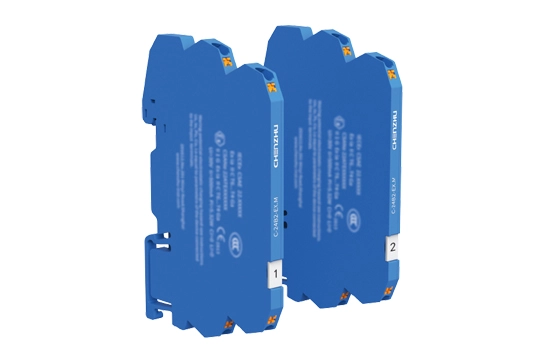In today's fast-paced world of information technology, electronic devices are being used in increasingly diverse applications. However, their lower operating voltage and reduced surge tolerance make them particularly sensitive to transient overvoltage in system signals. This is especially true in the field of automation, which involves a large amount of signal transmission, requiring the installation of numerous surge protective devices for transient overvoltage protection.
While ensuring the surge protection performance of SPDs is critical, their size is also becoming increasingly important. The more SPDs that can be installed in a single control cabinet, the fewer cabinets are needed, resulting in lower overall costs.
Signal SPD protects signal devices (e.g. PLC, DCS, SCADA, transmitter, flow meter, solenoid valve) from lightning ,which is applied to signals such as AI/ AO/ DI/ DO, RS485/ RS232/ RS422, RTD and TC etc..

Large discharge capacity, Nominal discharge current of In10kA. It has multiple authoritative certifications, including type tests and SIL3 certification.
Compact size, saves valuable space and is the thinnest SPD available at just 3.5mm
Customizable identification label for easy identification
Convenient installation, push-in or screw connection
Can be selected to protect RS-232, RS-485, RTD, TC, AI, AO, DI, DO, and other signal interfaces.

When lightning strikes, high-power equipment starts and stops, or electrostatic discharge occurs, transient overvoltage (surge) is generated, causing equipment damage. SPD (Surge Protective Device) is the abbreviation for surge protection device. SPD is installed at the front end of the equipment being protected. When a surge occurs, the SPD can quickly conduct electricity and discharge the surge to the ground, limiting the voltage to a safe level, thereby protecting the equipment at the back end.
Whether an SPD should be installed is generally considered from three aspects.
1. The probability of equipment being invaded by surges.
Such as the number of lightning days in the local area, the environment in which the system is located, and the installation location of the equipment.
2. The importance of the equipment.
Such as the value of the equipment itself, the safety requirements of the system, and the importance of the equipment in the system control.
3. SPD related standards.